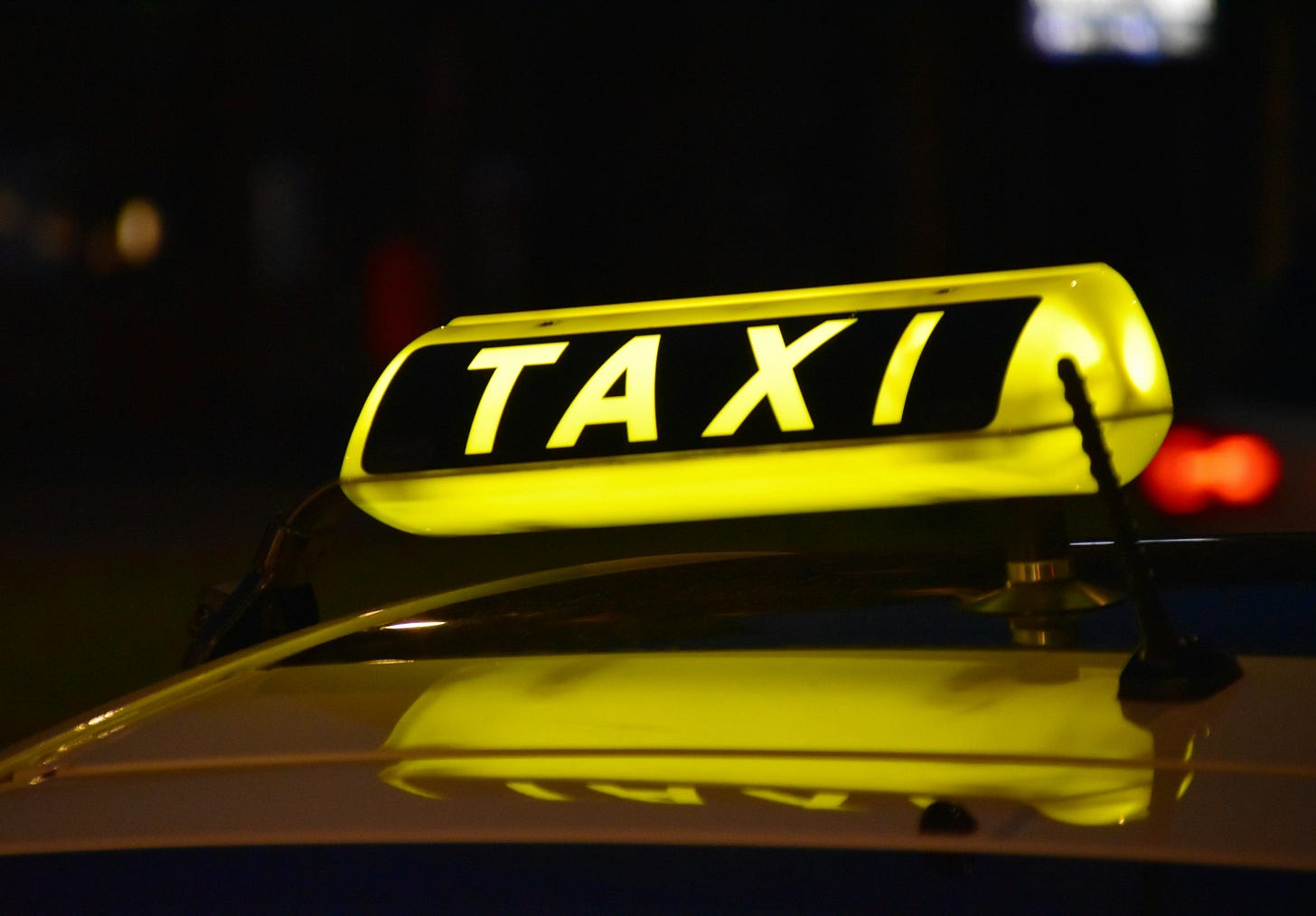You’re just hailing a yellow cab
a.k.a when you become what you disrupt
Last week, we crossed 4,000 subscribers. Wild.
There are villages with smaller populations.
Thank you for sharing, liking, and helping us grow. There’s no Notadeepdive chaos without you.
If you’ve never shared or liked the newsletter, try it; it’s a nice feeling, I promise. Next up, 5k!
The wonky, weird world of ride-hailing
In the early days, when free money was raining and customer acquisition bonuses flowed like palm wine at a Showdemcamp listening party, gig driving was a sweet hustle.
In 2015/6, one of my flatmates joined Uber with his much-cherished 2009 Honda Accord after hearing about a ₦40k sign-on bonus. He spent weeks convincing everyone with an eligible car to sign up. He wasn’t a selfless guy, he just liked the referral bonuses he got whenever anyone signed up to drive.
The freebies extended to customers, too. I might have gamed the system and gotten two weeks of free rides in that time.
But all free things must come to an end and even the best nurtured relationship can go sour.
What began as a rosy relationship between gig platforms and drivers soon became mutual resentment. While drivers were once “driver partners” in every sense of the word: sitting on meetings, providing feedback and generally assuming good faith, now they’re firmly on the other side of the table, staring down at the companies. The breakdown of that goodwill coincided with President Buhari delivering two terms of economic destruction.
At the heart of the problem was that the drivers experienced in real-time, the worsening economics of what used to be a fantastic money spinner. Somehow, their takeaway was that corporate greed was responsible. It led to and continues to cause endless friction (the drivers’ association has a strike action scheduled for May 1).
Ride-hailing has an extremely low barrier to entry. All you need is an app that you can buy off one of several providers and then the major hustle: finding drivers and customers.
And while ride-hailing in Nigeria first went mainstream when Uber launched in 2014, Bolt (formerly Taxify), launched in 2016, and a mad race for sector domination began. New ride-hailing startups were launching weekly. It felt a lot like remittance startups today: If you shook a tree in Lagos in 2016/2017, an "affordable cab" app would fall out.
Competition for drivers became a bloodbath. Standards dropped. While there was an early insistence on properly maintained cars of a certain age, the later entrants to the market knew that simply having the largest pool of drivers would do the trick. So they lowered standards and signed up drivers.
The inevitable price wars were bloody.
Customers, naturally, were the biggest winners, enjoying rides at artificially low prices for years. But those prices came at a cost: drivers bled, and platforms burnt cash.
Commissions — the slice drivers paid to platforms — were slashed every now and then. Some platforms even dangled "zero commission for one year." It didn’t matter.
The base fares were so low that eventually, even 100% of the ride fee wasn’t enough for drivers to thrive.
And comically, lower commissions almost always meant even shabbier cars. Today, some of the cars you hail are almost indistinguishable from the yellow taxis these platforms set out to replace.
Driver strikes became more frequent. Drivers unionised. Lawsuits flew. Meetings were called.
But no miracle materialized. With such tight margins, the only solution was for customers to pay more.
Drivers refused to accept it for a while, clinging to the delusion created by the early days.
The platforms were more pragmatic but still delayed price hikes for as long as possible, fearing that the kind of price increases that would work for all stakeholders would shrink the already-niche market.
Then came 2023 and the end of Nigeria’s fuel subsidies. Fuel prices tripled overnight. There was no more delaying. Base fares were jacked up.
My car was at the mechanic for two weeks in early 2025, and relying on cabs was a financially painful experience; the kind that makes you question all your life choices.
And yet, even now, the drivers’ grievances haven't disappeared.
A drivers' union is threatening a strike on May 1, insisting fares are still too low:
"Despite our efforts to engage in dialogue, these companies have consistently prioritised their profits over our well-being.”
Gig drivers often believe the real villain is platform greed, not the cold reality of tight margins. They believe a better, fairer app would fix everything. Yet, there are already platforms that charge no fees or some that charge as little as 10%. Those platforms still haven’t made it work for drivers.
In 2023, drivers’ unions began talking about building their ride-hailing apps. It’s a noble but doomed quest.
India’s taxi unions launched an app in 2017 on the back of similar sentiments.
Yet, here’s a excerpt from a March 2025 news article:
“Union Minister Amit Shah announced the plan in Parliament on Wednesday, stating that the new service will register two-wheeler taxis, rickshaws, and four-wheeler taxis. Moreover, unlike existing private company services, Sahkar Taxi will ensure that all profits go directly to the drivers, rather than large corporations, he said.”
They’re building another app to combat corporate greed while Uber and Ola control 80% of the market.
You can unionise, strike, or code your own app. But if the model is wonky, what can the righteous do?
See you next Friday! Did I mention there’s a big announcement coming in two weeks? Alright alright, see you next week.





The real problem is our shitty economy. These ride hailing apps are very far from cheap. They should go and protest cost of fuel please